Submitted by WA Contents
The Design Museum opened in its New London Home
United Kingdom Architecture News - Nov 25, 2016 - 12:29 18097 views
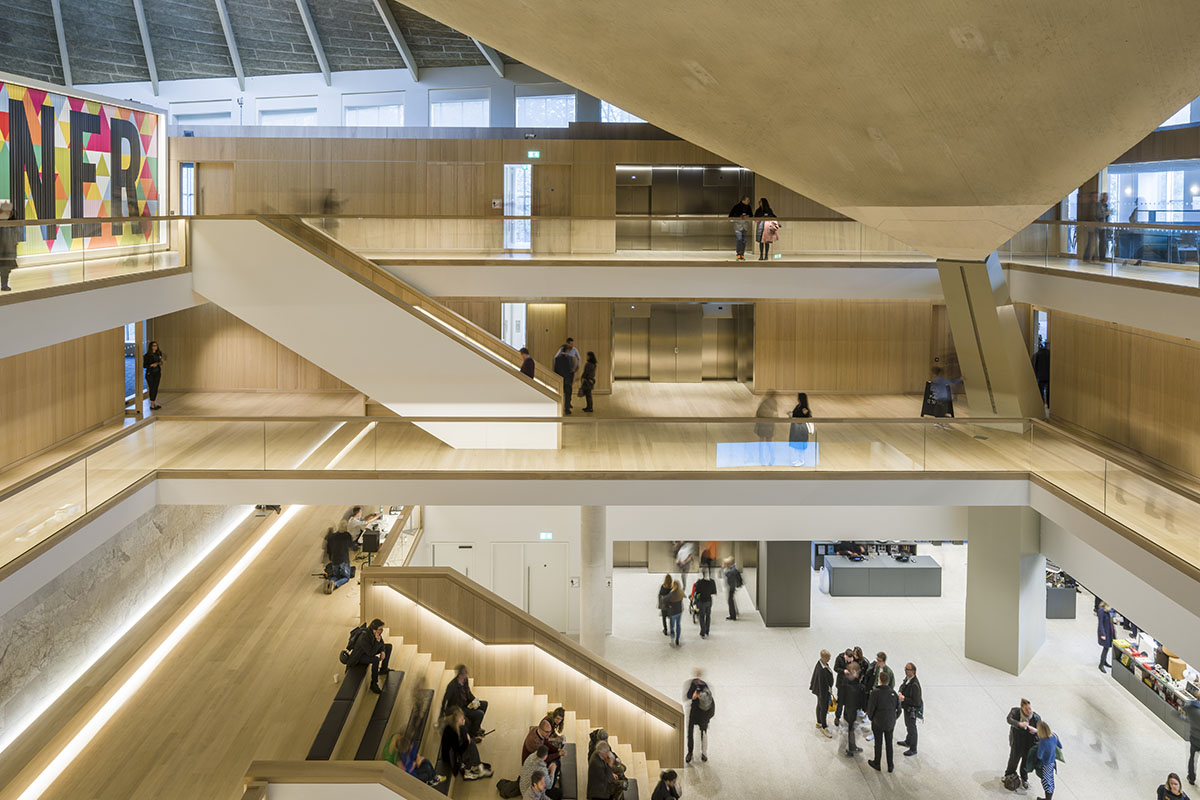
The Design Museum has opened in its new home on Kensington High Street, designed by John Pawson. The new building includes two major temporary gallery spaces, a free permanent collection display, a restaurant overlooking Holland Park, auditorium, studios, library, archive and new learning facilities. New building triples museum size to 10,000 square meters.
Housed in a landmark grade II* listed modernist building from the 1960s that has been sensitively retuned by John Pawson, the project is the culmination of a five-year construction process. The museum has now tripled to 10,000sqm from its previous premise in Shad Thames, south-east London. Following an investment of £83m, the structure has been transformed for its future role as the world’s leading institution dedicated to contemporary design and architecture.
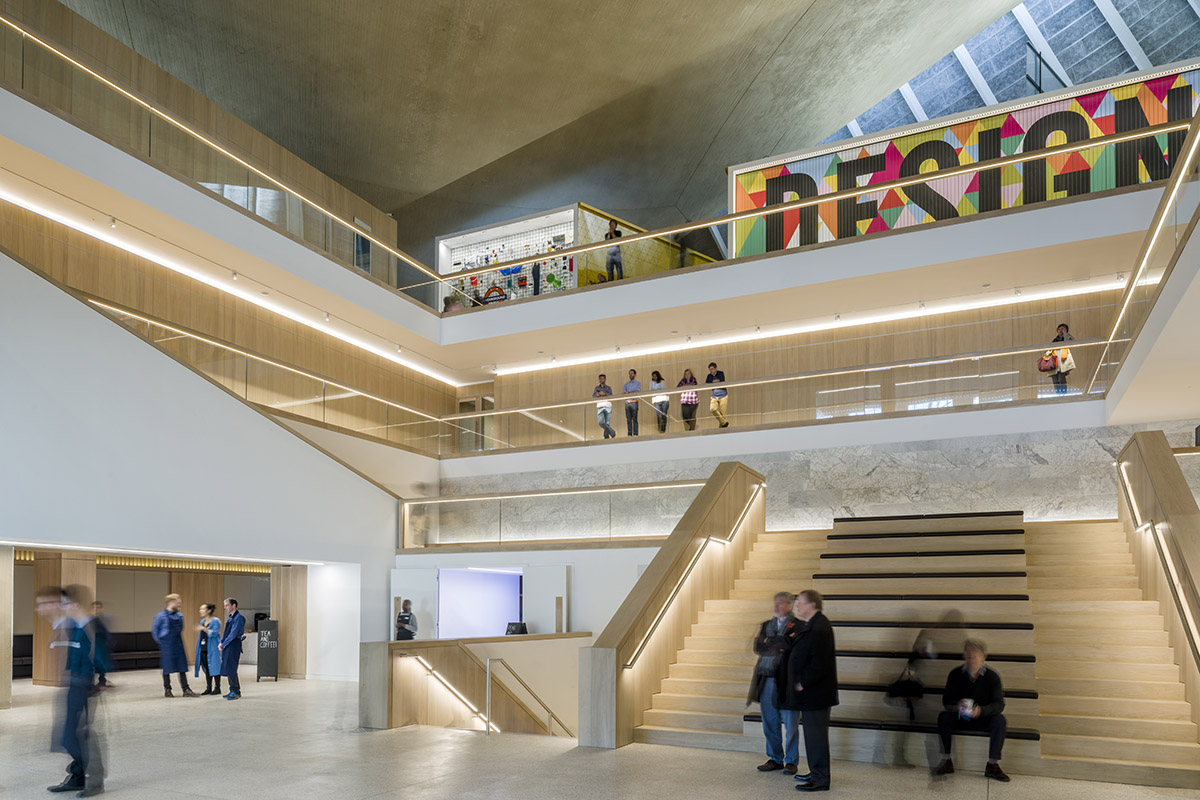
Image © Gareth Gardner
OMA, Allies and Morrison and Arup have restored the building’s spectacular concrete roof and distinctive facade. Remodeling the interior, John Pawson has created a series of calm, atmospheric spaces ordered around an oak- lined atrium, incorporating key elements from the original structure.
The project has seen some of the world’s leading designers, manufacturers and patrons come together to create a new global hub for contemporary design.

Image © Gareth Gardner
With architectural and structural expertise from OMA, Allies and Morrison and Arup, a permanent collection display designed by Studio Myerscough, a restaurant and members’ room by Universal Design Studio, a Centre for Learning made possible by the Swarovski Foundation, flooring by Dinesen, furniture by Vitra, shelving by Vitsoe, lighting by Concord, a visual identity by Studio Fernando Gutierrez and way-finding by Cartlidge Levene, the new Design Museum is an outstanding example of interdisciplinary collaboration.
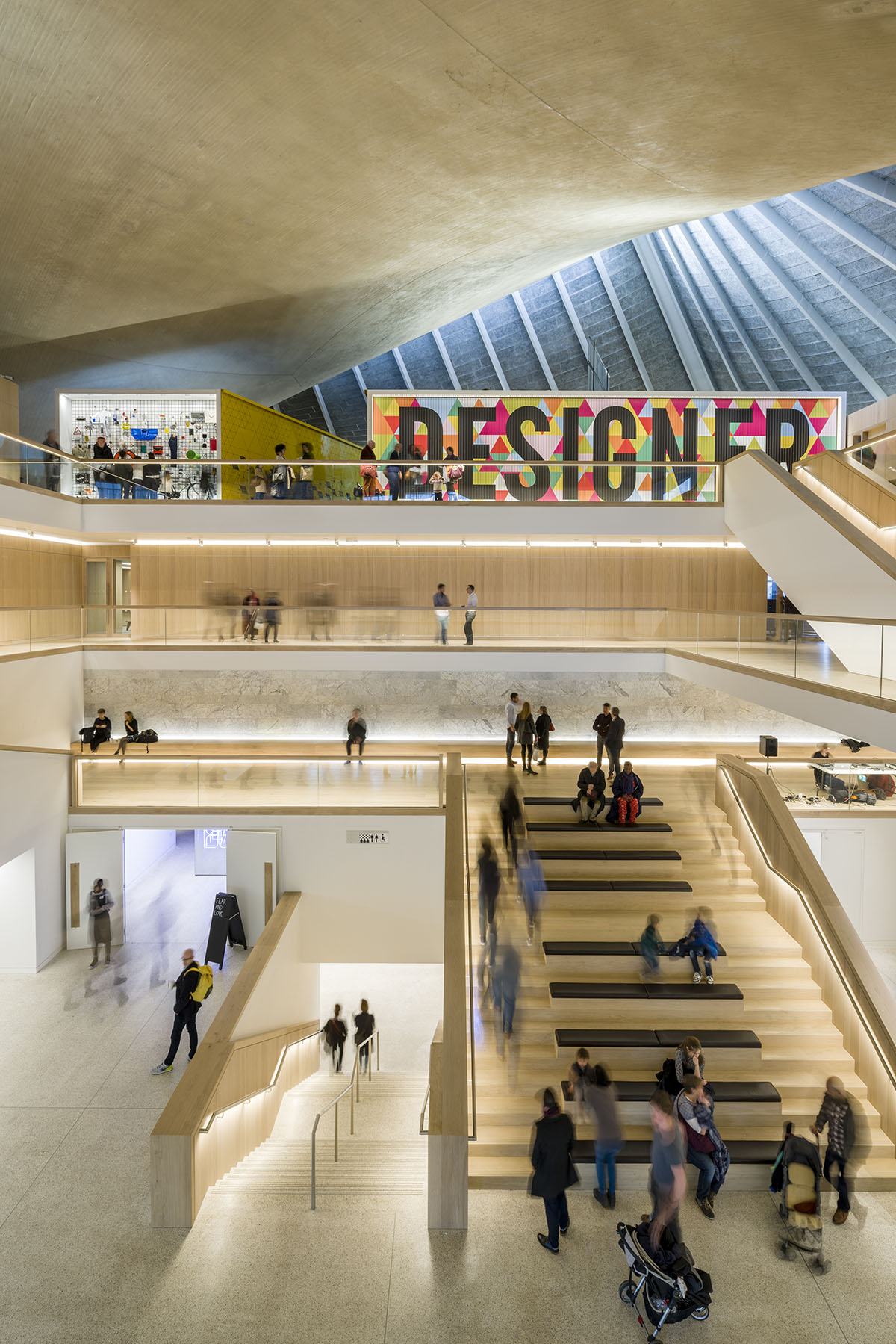
Image © Gareth Gardner
Founded by Sir Terence Conran, the Design Museum opened in 1989 in a former banana ripening warehouse on Shad Thames, following its successful original incarnation opening in 1983 as the Boilerhouse Project, in the basement of the V&A.
Remaining at Shad Thames until 30 June 2016, the Design Museum mounted a host of critically acclaimed exhibitions, including shows dedicated to the work of Lord Richard Rogers, Thomas Heatherwick, Dame Zaha Hadid, Dieter Rams, Ettore Sottsass, Sir Paul Smith, Christian Louboutin and Sir Kenneth Grange.
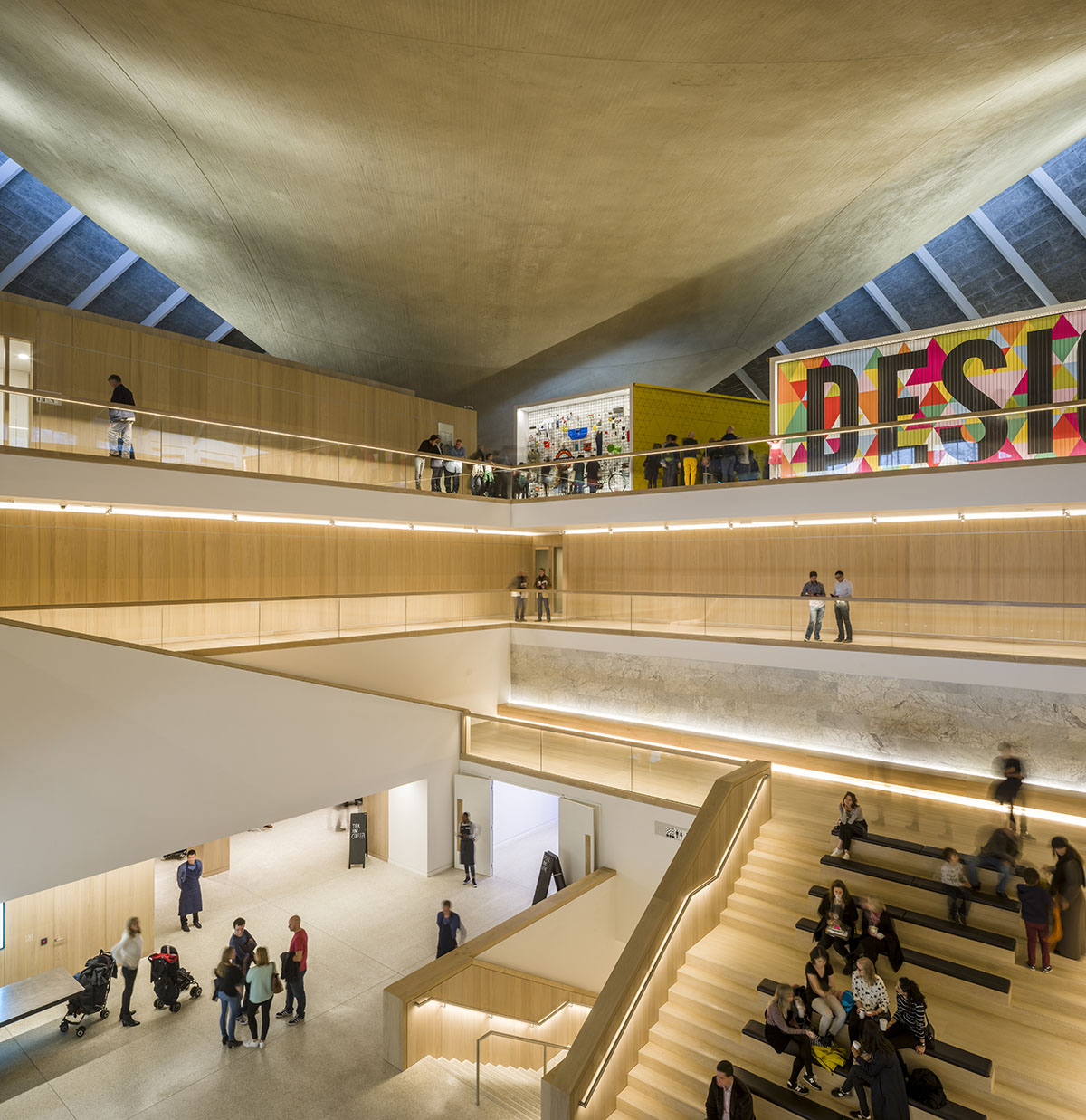
Image © Gareth Gardner
Starting on site in 2012, the Design Museum is the first major public work of John Pawson - a designer famed for his ability to create simple yet sensuously rich spaces and for his refined use of materials.
Pawson’s previous projects include an apartment building in New York for Ian Schrager, the new Cistercian Monastery of Novy Dvur in the Czech Republic, the Sackler Crossing in Kew Gardens and Christopher Kane's first store in London. The museum sits on Kensington High Street next to the southern entrance to Holland Park and forms the heart of the new Holland Green residential development.
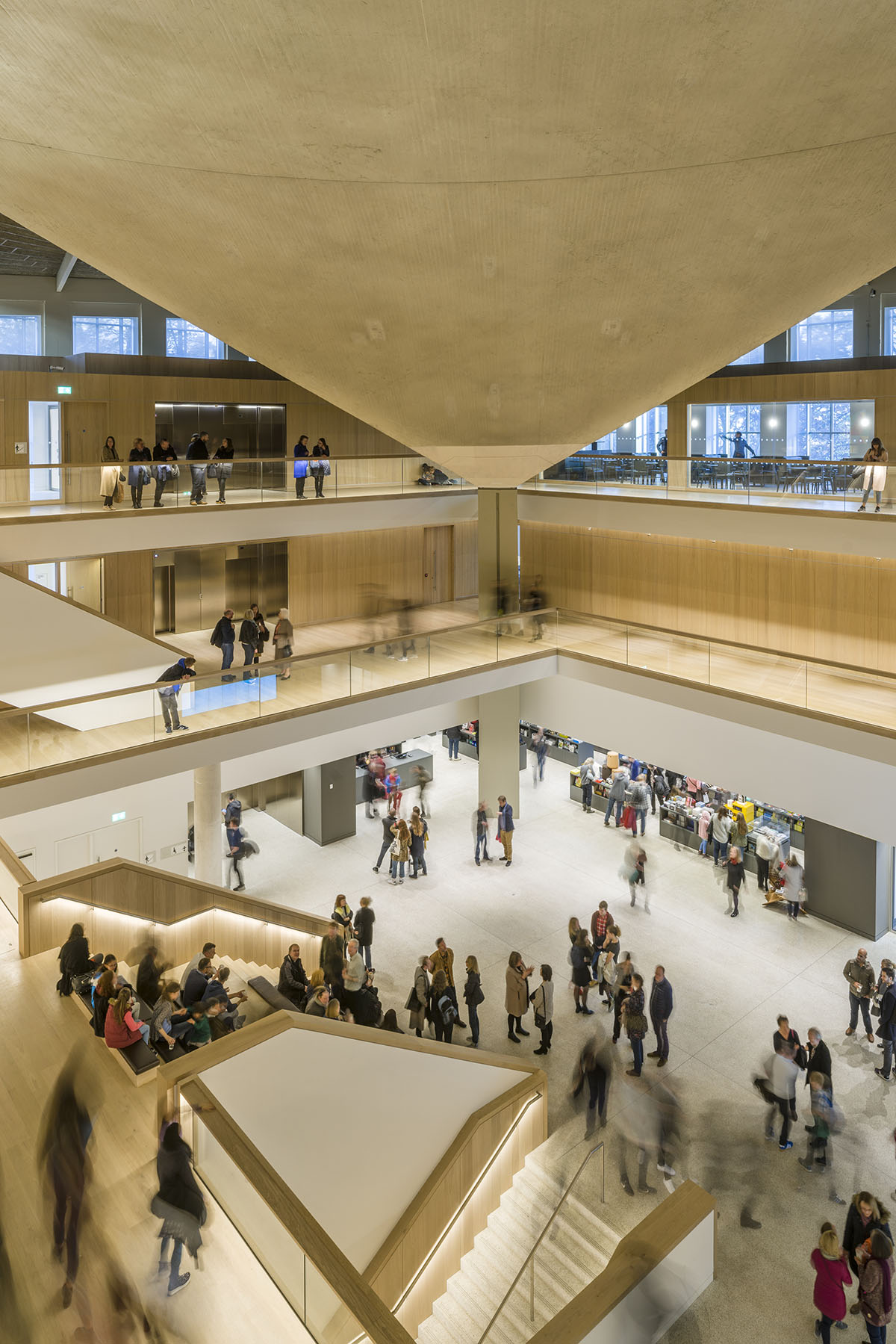
Image © Gareth Gardner
In 2010 a partnership formed by Chelsfield and the Ilchester Estate to redevelop the site was granted planning permission by the Royal Borough of Kensington and Chelsea for the construction of three residential building and the refurbishment of the Grade II* listed building located at the centre of the site.
Following the terms of a Section 106 agreement that formed part of the planning permission, the Design Museum was granted a 175-year lease of the listed building at a peppercorn rent.
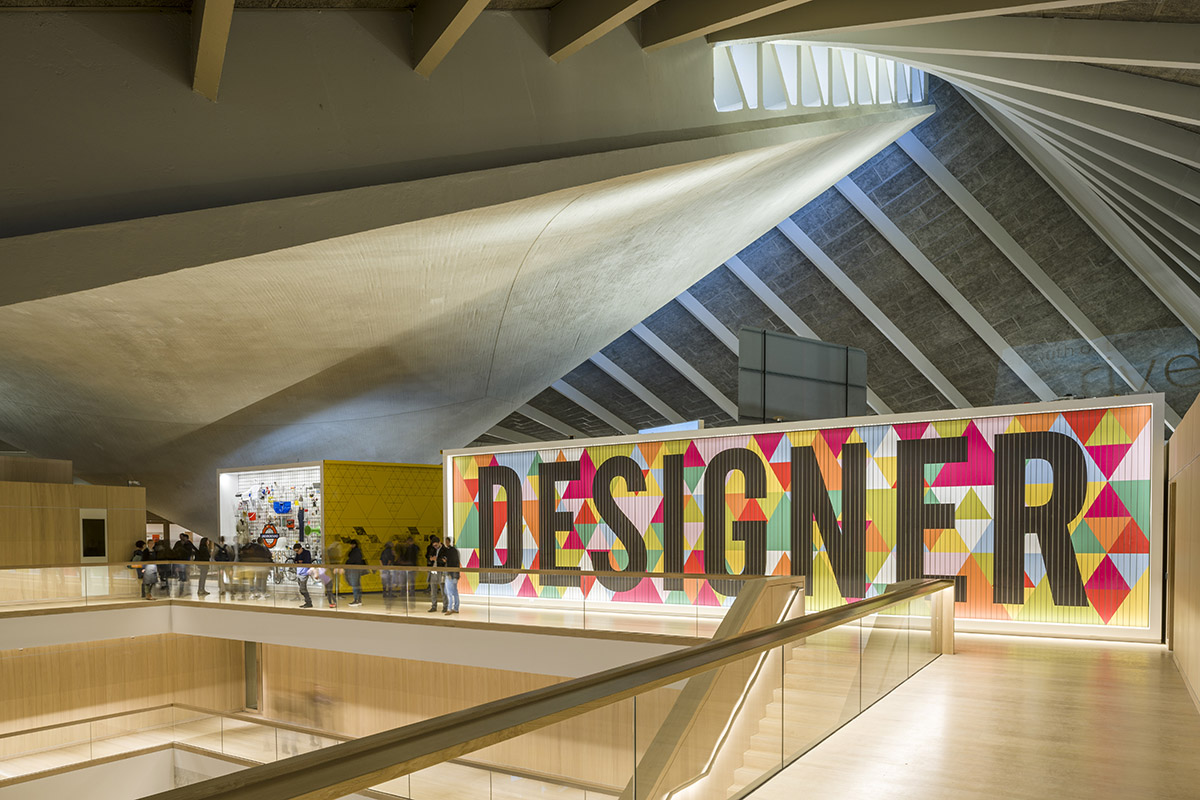
Image © Gareth Gardner
The complex renovation of the museum saw OMA led by Reinier de Graaf, Allies and Morrison, Arup and John Pawson work together to bring this landmark of post-war British architecture back into use. Using radical engineering techniques, the original concrete floors were removed – a process that entailed propping the roof on a temporary steel structure 20 metres above the ground. The original façade has been replaced with a double glazed skin, significantly improving insulation standards and allowing daylight into the interior.
The new exterior has been meticulously detailed to resemble the original blue skin of the building, with matching mullions and a fritted pattern of printed dots. A new public plaza complete with fountains has been installed at the entrance to the museum, within a landscape designed by West 8.
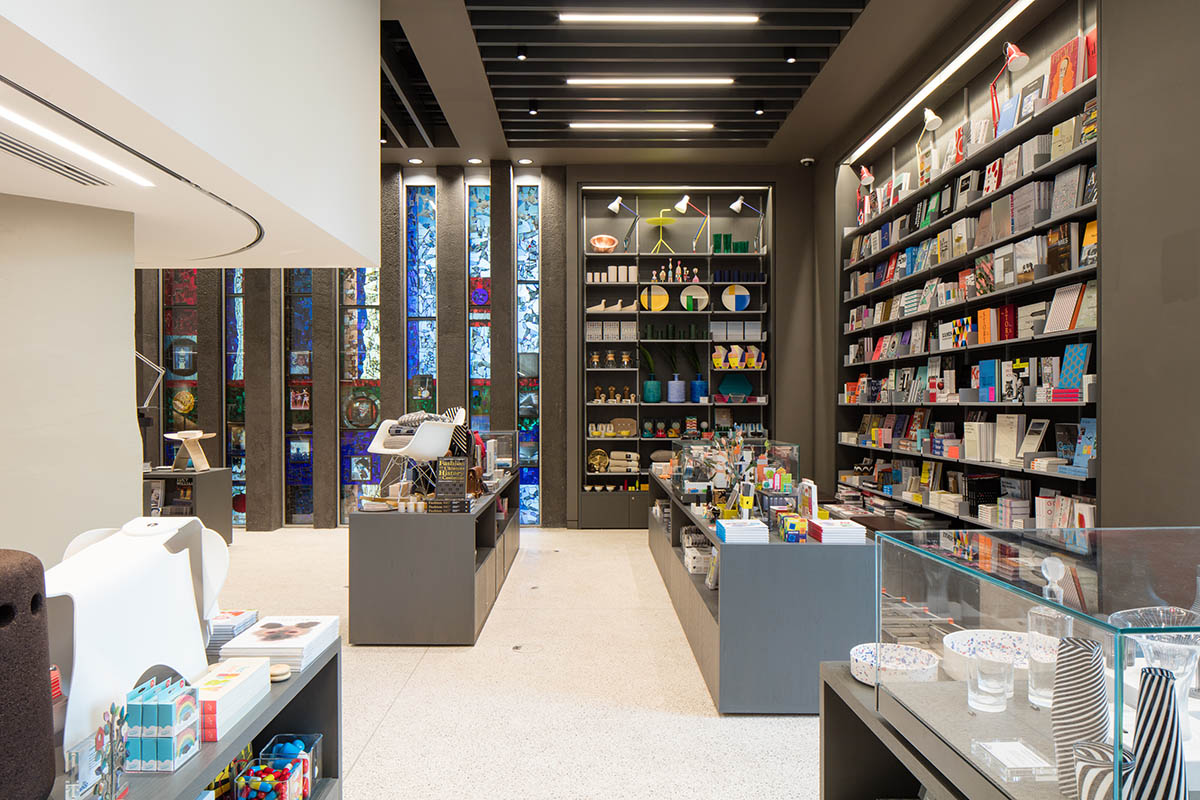
Museum shop. Image © Luke Hayes
Inside the museum, visitors find themselves in a central atrium with striking views up to the iconic hyperbolic paraboloid roof. The stunning concrete roof spans the length of the building, rising on the two opposing corners to create a manta ray-like structure above.
Galleries, learning spaces, café, events space and a shop are arranged like an opencast mine around the main atrium, allowing visitors to navigate the space with ease and to discover everything the building has to offer by simply walking up its oak staircases.

Museum shop. Image © Luke Hayes
The building has two generously proportioned temporary galleries, one on the ground floor, the other on the museum’s lower level. Both featuring double-height spaces and textured concrete columns, these galleries will display up to seven temporary exhibitions per year, priced between £10 and £18.
The double-height basement also features a dedicated museum collection store with a glass window, allowing visitors a behind-the-scenes glimpse of pieces not on display. The 200-seat Bakala Auditorium completes the basement and allows the museum to expand its public programme and evening talks.
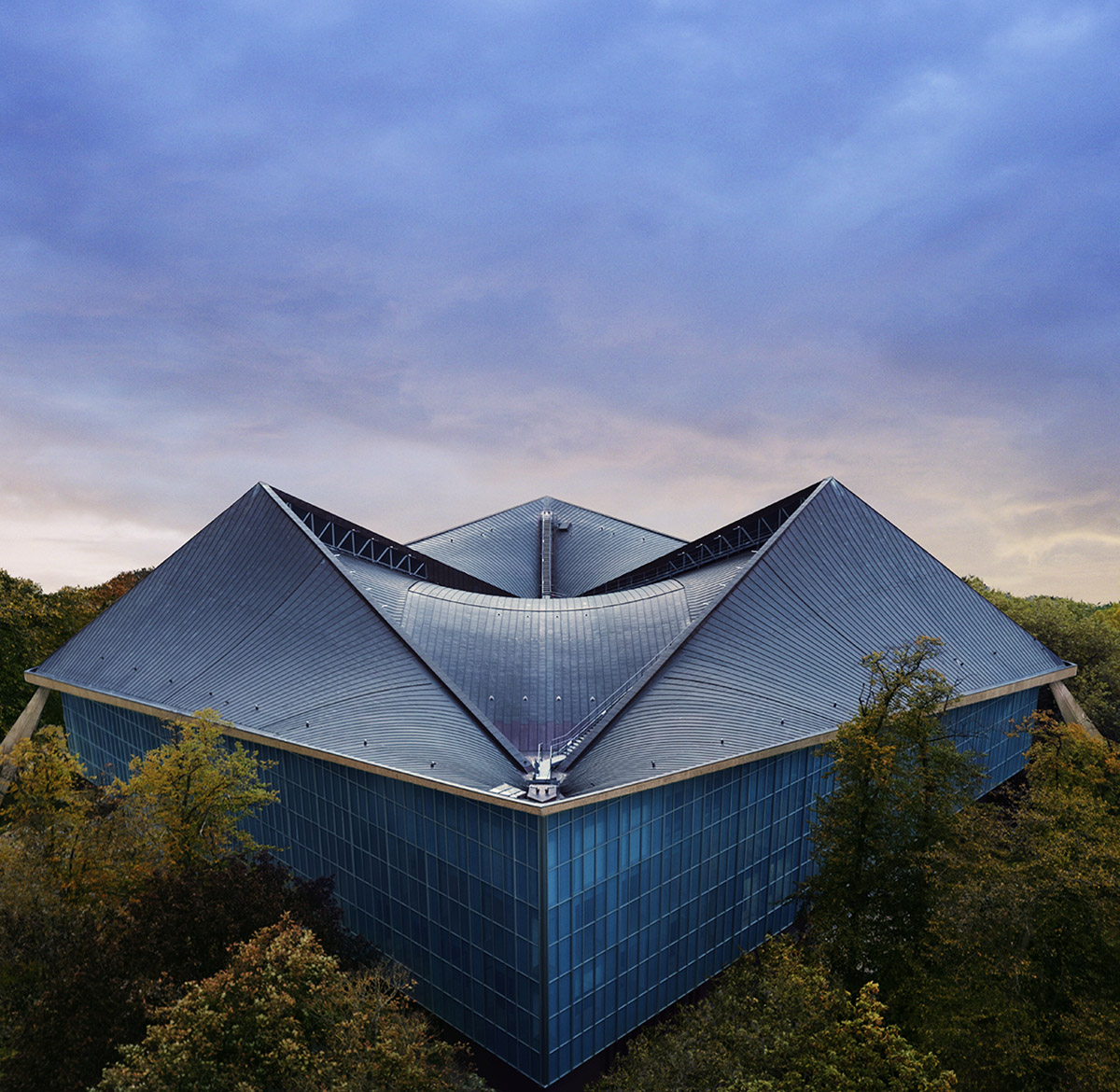
Image © Gravity Road
The ground floor houses the Design Museum’s coffee and juice counter, catered by Prescott & Conran, seating up to 40 people and serving brunch and snacks. Located opposite is the Design Museum Shop, featuring Vitsoe shelving units and the building’s original stained glass windows by Keith New.
Stock includes exhibition merchandise, a world-class selection of international magazines, exclusive designer collaborations and specialist art and design books in collaboration with Phaidon.
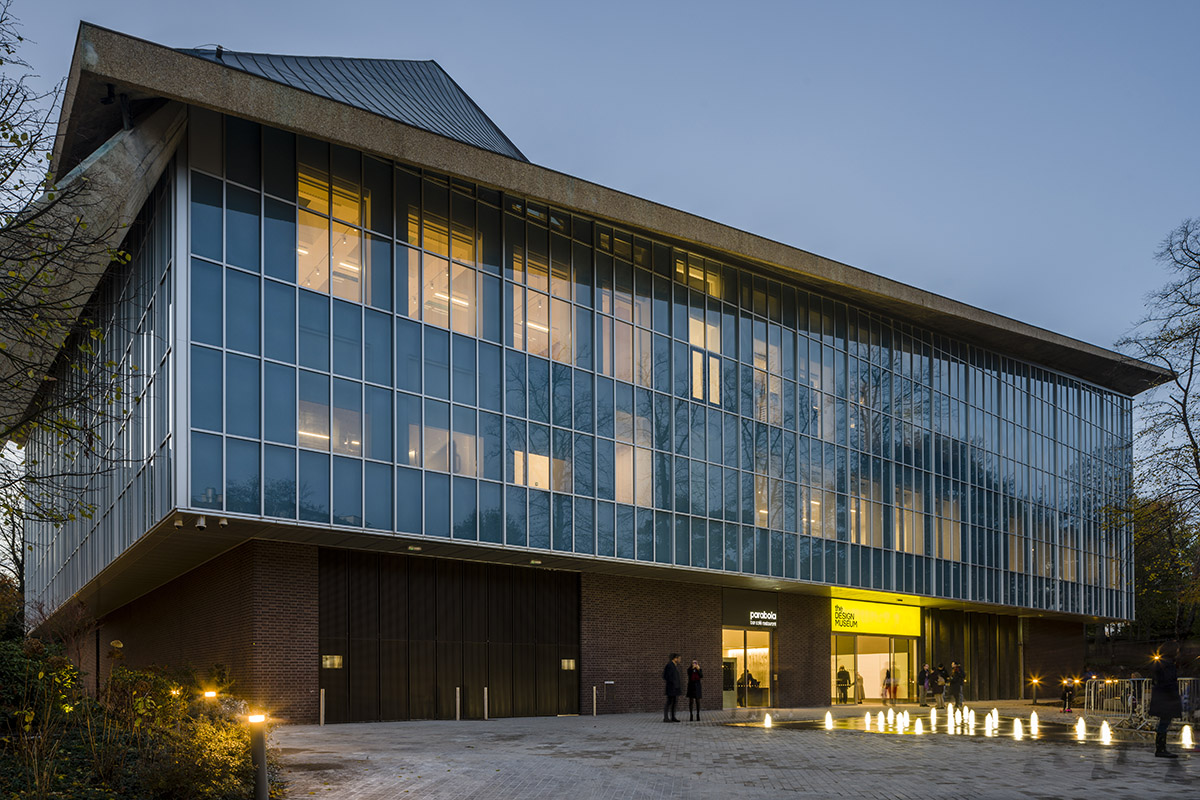
Image © Gareth Gardner
The oak staircases form the circulatory heart of Pawson's design. Strip LEDs line the handrails and banisters, adding theatre to the experience of moving round the building, as visitors follow the light towards the top floor and the soaring underside of the roof. Bench-style leather seating across a section of the main staircase provides a comfortable place for visitors to pause and take in their surroundings.
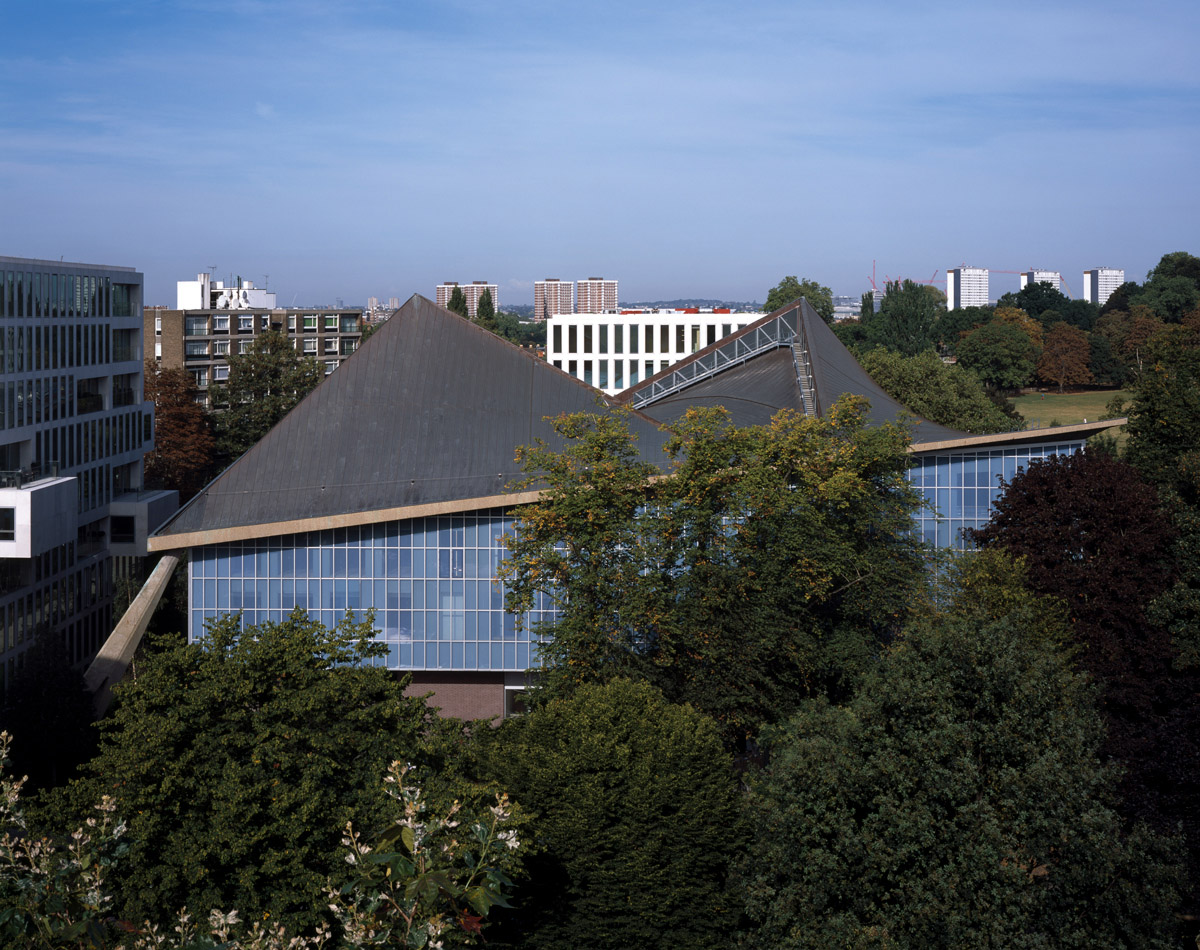
Image © Helene Binet
Italian terrazzo flooring is used throughout the basement and ground floors, transitioning to warm-toned Dinesen oak flooring and wall panels on the upper floors. A key element of the Pawson vocabulary, a wooden bench with concealed lighting spans one side of the Weston Mezzanine.
The bench sits in front of a series of marble panels conserved from the original building, which before that had previously been installed in the Imperial Institute in1857. The Weston Mezzanine is supported by the Garfield Weston Foundation.

Image © Luke Hayes
John Pawson commented: ''There are ‘moments’ in the building that I relish every time I walk around, but I think it is really the way everything comes together – the new and the old – that gives me the greatest pleasure. I hope the Design Museum shows people that you don’t have to tear down and start from scratch to make exciting new cultural spaces.''
Wayfinding by Cartlidge Levene guides people through the building and utilises pictograms designed for the 1972 Munich Olympics by the celebrated German graphic designer Otl Aicher.
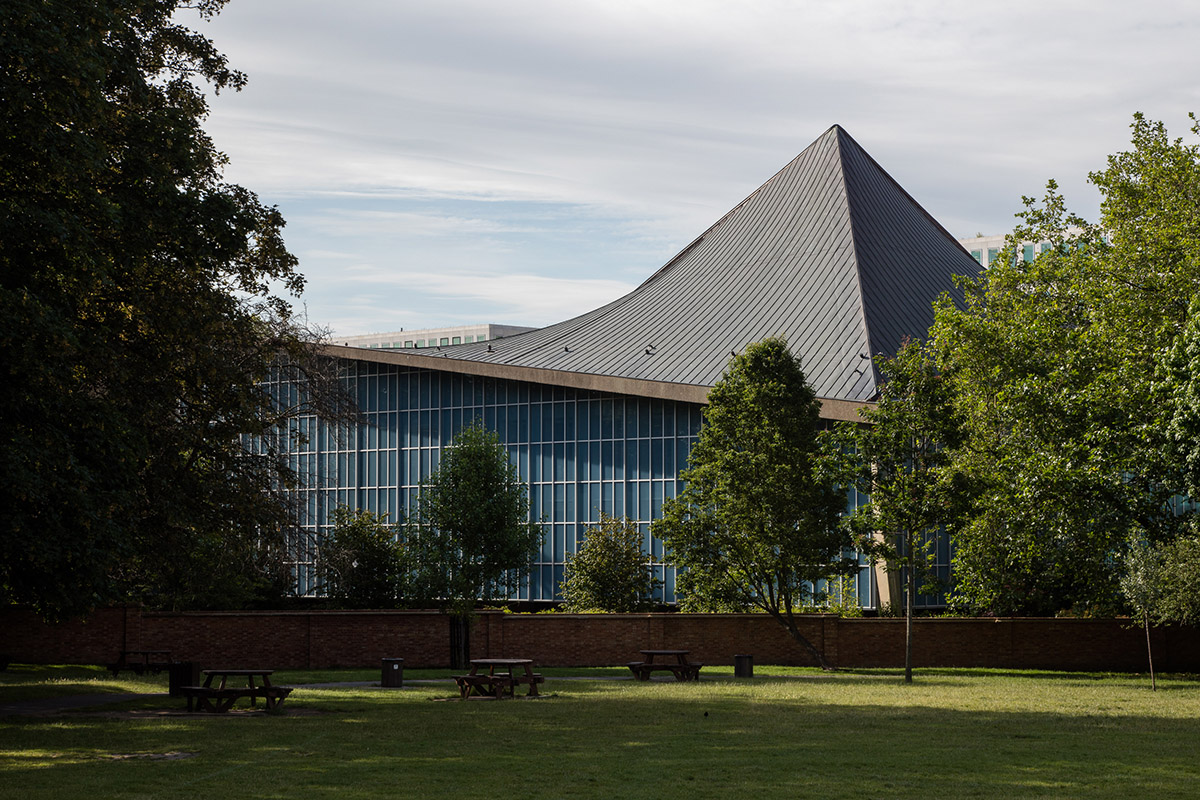
Image © Luke Hayes
On the first floor visitors will find new spaces dedicated to learning, enabling the museum to educate future generations about the value of design. The Sackler Library and Archive features a collection of books and drawings in handsome oak bookcases that incorporate purpose-designed seating. Located adjacent to the library is the Il Cerchio di Giotto film studio and the Johnston Nijman Meeting Room.
The main feature of the first floor is the new Swarovski Foundation Centre for Learning, with hands-on workshops, as well as digital learning studios and the Design Studio. The new learning facilities expect to see 60,000 learners pass through their doors every year.

Initial sketch by John Pawson
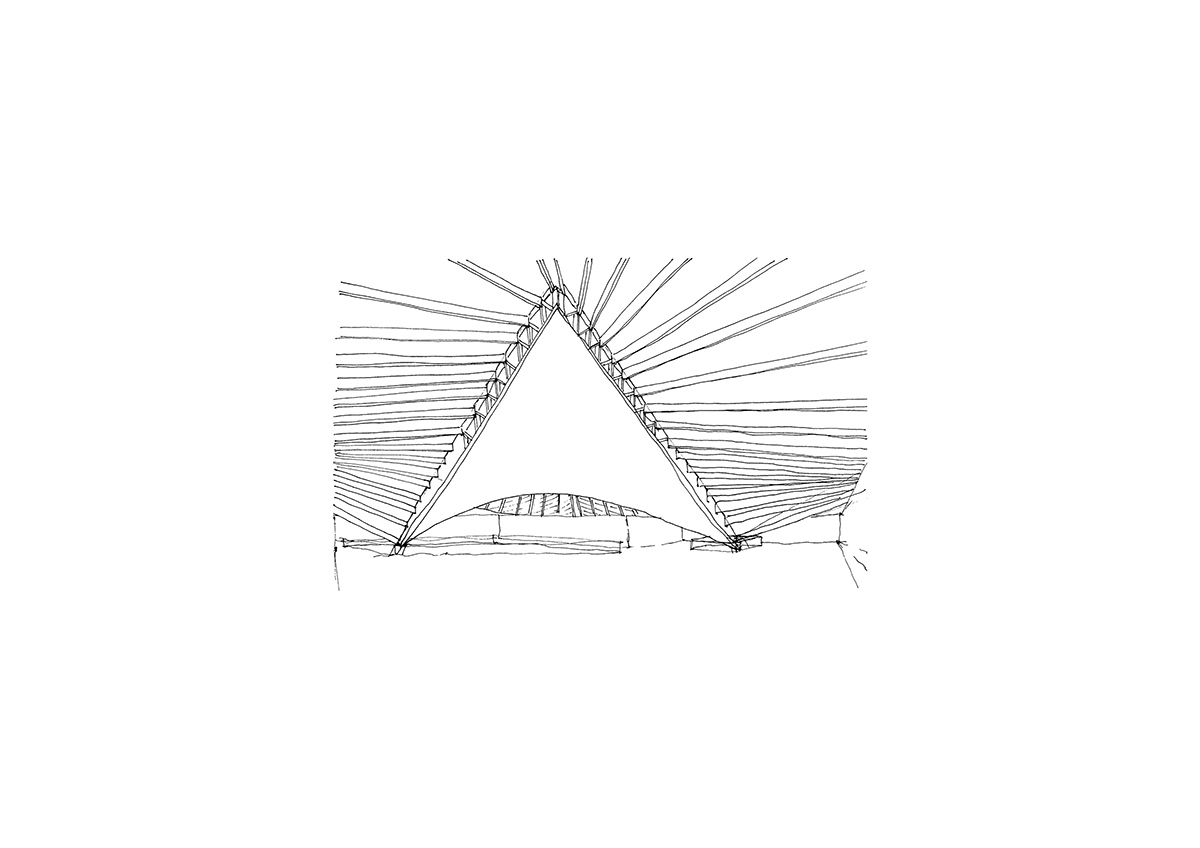
Initial sketch-2 by John Pawson
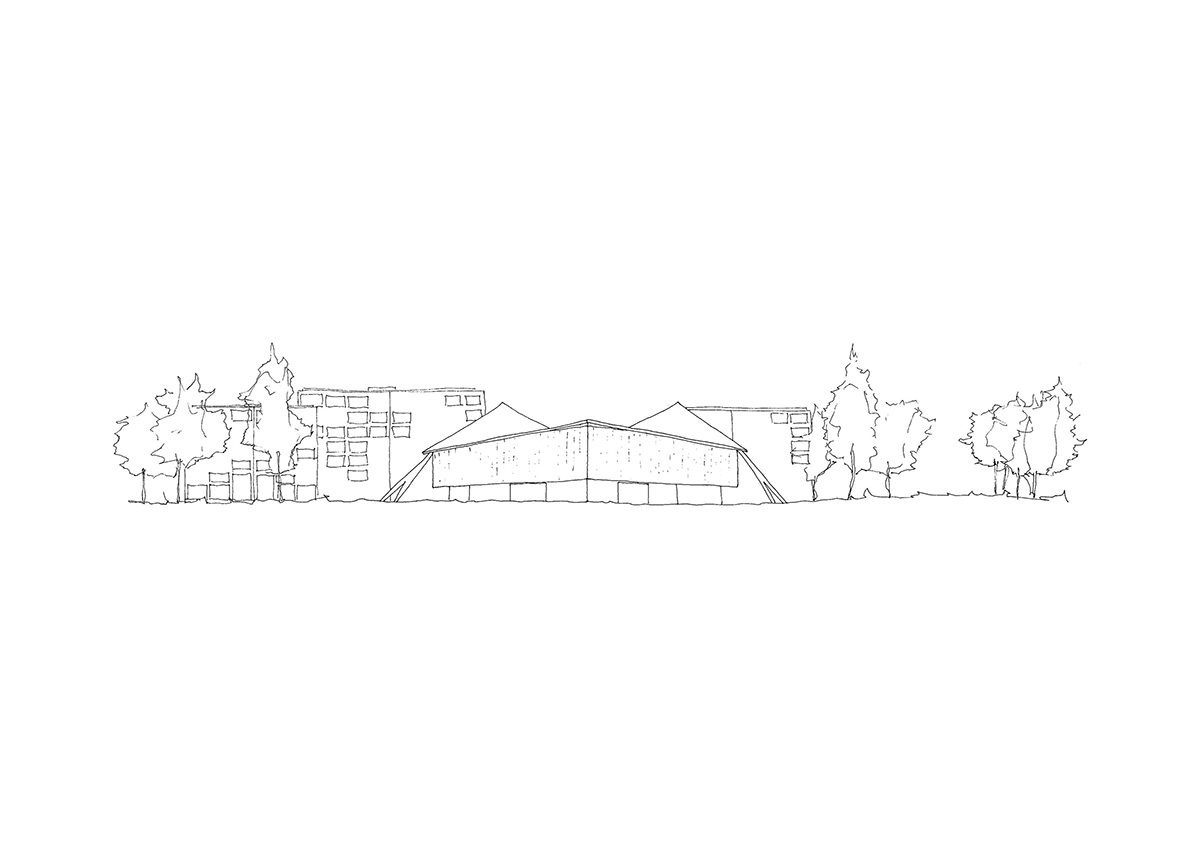
Initial sketch-3 by John Pawson

The architect, John Pawson. Image © Cindy Palmano
To celebrate the opening this week, the museum offers the visitors the chance to win the Ultimate Design Museum Pass including; dinner for two at the new Parabola bar café restaurant and a meet-and-greet with legendary chef Rowley Leigh, who is the first collaborator in the ‘Guest Chef Series’, two pairs of tickets to the opening temporary exhibitions Fear and Love: Reactions to a Complex World and Beazley Designs of the Year, a curated tour of the temporary exhibitions and £100 voucher to spend at the Design Museum Shop.
Entry deadline to win a museum pass is due on Friday, December 2, enter now!
Top image © Gareth Gardner
> via The Design Museum
